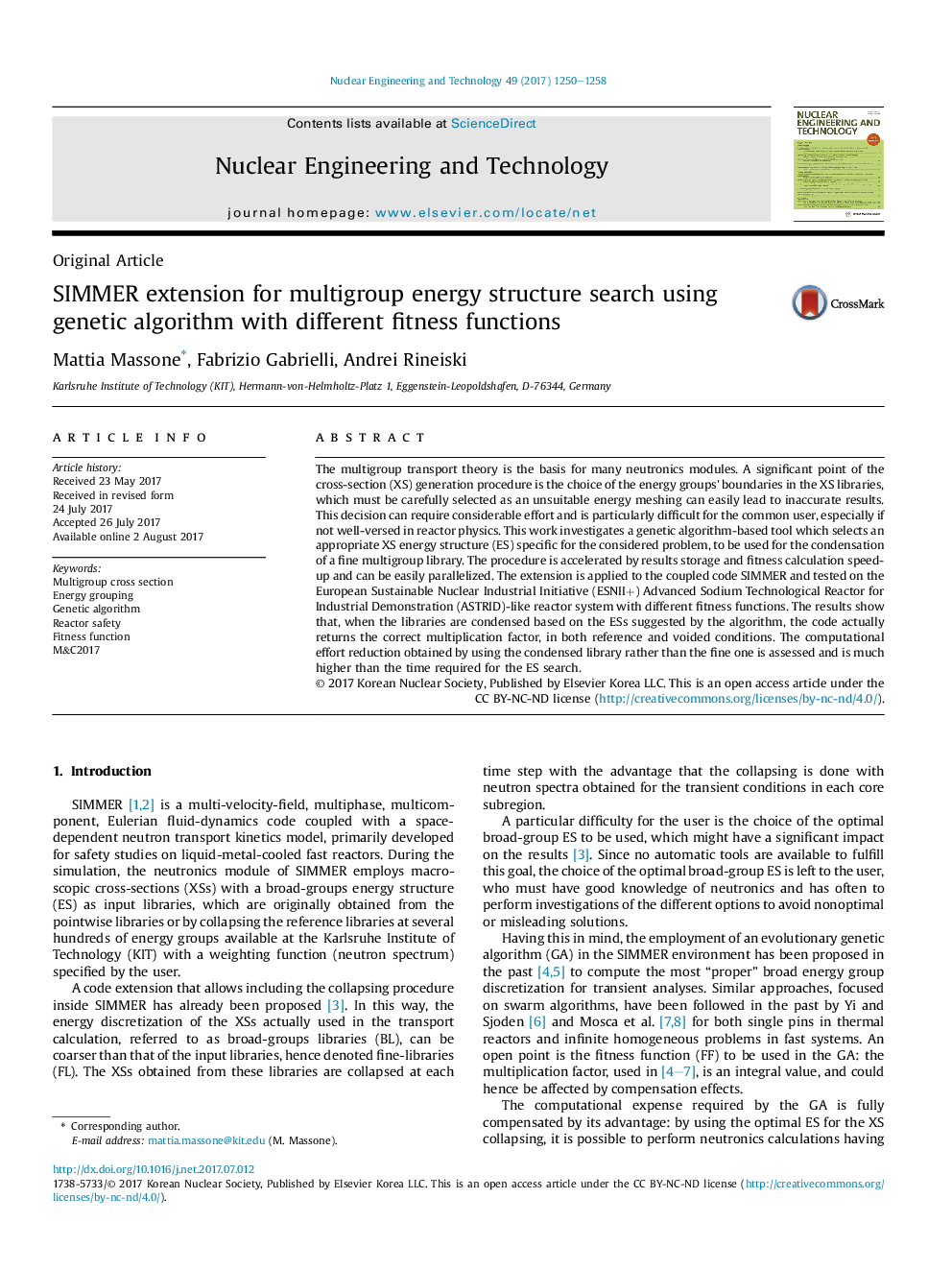| Article ID | Journal | Published Year | Pages | File Type |
|---|---|---|---|---|
| 5477883 | Nuclear Engineering and Technology | 2017 | 9 Pages |
Abstract
The multigroup transport theory is the basis for many neutronics modules. A significant point of the cross-section (XS) generation procedure is the choice of the energy groups' boundaries in the XS libraries, which must be carefully selected as an unsuitable energy meshing can easily lead to inaccurate results. This decision can require considerable effort and is particularly difficult for the common user, especially if not well-versed in reactor physics. This work investigates a genetic algorithm-based tool which selects an appropriate XS energy structure (ES) specific for the considered problem, to be used for the condensation of a fine multigroup library. The procedure is accelerated by results storage and fitness calculation speed-up and can be easily parallelized. The extension is applied to the coupled code SIMMER and tested on the European Sustainable Nuclear Industrial Initiative (ESNII+) Advanced Sodium Technological Reactor for Industrial Demonstration (ASTRID)-like reactor system with different fitness functions. The results show that, when the libraries are condensed based on the ESs suggested by the algorithm, the code actually returns the correct multiplication factor, in both reference and voided conditions. The computational effort reduction obtained by using the condensed library rather than the fine one is assessed and is much higher than the time required for the ES search.
Related Topics
Physical Sciences and Engineering
Energy
Nuclear Energy and Engineering
Authors
Mattia Massone, Fabrizio Gabrielli, Andrei Rineiski,
